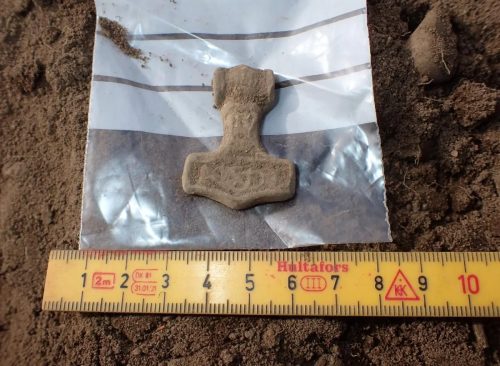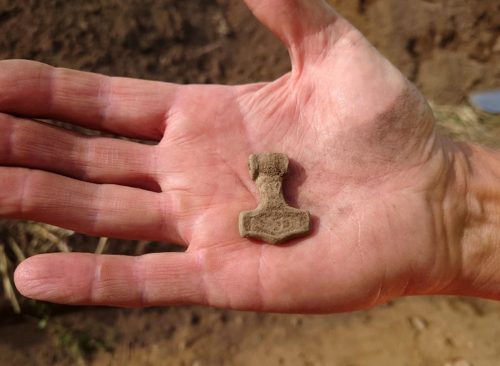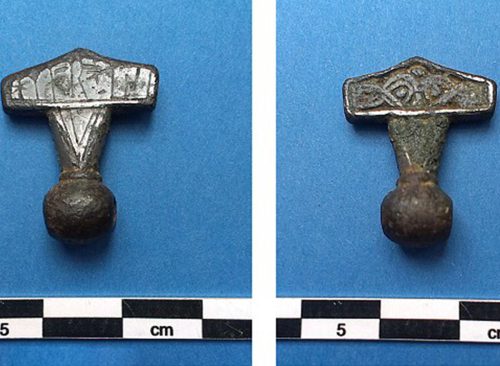Thor's Hammer Amulet Discovered in Sweden. "One of its Kind."
It's over 1,000 years old.

The power of Thor has drawn the world's eyes not to movie screens, for a change, but to a southwestern province in Sweden. There, archaeologists have discovered a Thor's Hammer amulet, a one of a kind, Viking-era artifact, Arkeonews reports. Construction crews discovered the trinket, which is fashioned after Thor's hammer Mjölnir, while excavating for a future housing development in Halland.
Previous digs in the area had uncovered Neolithic and Iron Age artifacts, but this is the first Viking-era artifact discovered there. It's also the first Thor's hammer amulet to be discovered in the area. Read on to find out what the researchers found, the contents of other discoveries in the area, and why this particular find is so unique.

Experts believe the charm dates back to the late 10th century. It was made of lead and may have been overlaid with gold or silver, experts say. it contains a hole in the shaft, allowing it to be strung and worn as a pendant. Archaeologists believe the hammer was worn around the neck as a protective amulet.
Photos of the amulet showed that it's slightly more than 1 inch long and 1 inch tall, able to fit in the palm of a hand. "The find is unique in Halland, as a cod hammer of this type has never been found in the landscape before," said experts from the Swedish museum Kulturmiljö Halland on their blog.

During the Viking age, Mjölnir was associated with protective powers, and amulets of this nature were popular, worn to ward off evil. In this era, Scandinavia was beginning to pivot from the ancient Nordic religion to Christianity. Wearing a pendant like this would show allegiance to the traditional Nordic gods, experts say.
Experts have begun restoration work on the artifact, said Per Wranning from Kulturmiljö Halland. After the work is done, scientists will be able to analyze the composition of the piece and determine if it contained gold or silver.

In addition to the hammer amulet, the archaeologists found flint chips, ceramics, and a metal fitting that could be from the Viking Age or the early Middle Ages, they said. Hearths and other building elements such as pits and post holes were also discovered, and they suggest the site is from the Viking Age, which spanned approximately 793 to 1066 AD.
Previous archaeological digs in the area have found settlements from the Stone, Iron, and Viking Ages, experts said. In 2018, scientists uncovered a longhouse or communal dwelling that seems to date from Iron Age, which ran from about 1200 BC to 600 BC.

Ancient Origins notes this Thor's hammer is being called a "one of a kind" because it's the first such amulet to be discovered in Halland. But it's not the first notable archeological find in the area: In 2014, researchers discovered a huge Viking drinking hall measuring more than 164 feet by 46 feet.
That discovery was notable because it used ground-penetrating radar to assess the site instead of digging. "Our investigation demonstrates that non-invasive geophysical measurements can be powerful tools for studying similar building foundations," the scientists said.

Researchers at Denmark's Museum Lolland-Falster didn't have to do too much work to identify an ancient charm in 2014. Someone who was exploring a field with a metal detector discovered some small metal objects and turned them over to the museum. Among them: An amulet shaped like a hammer, which was engraved, "Hmar x is"—"This is a hammer."














